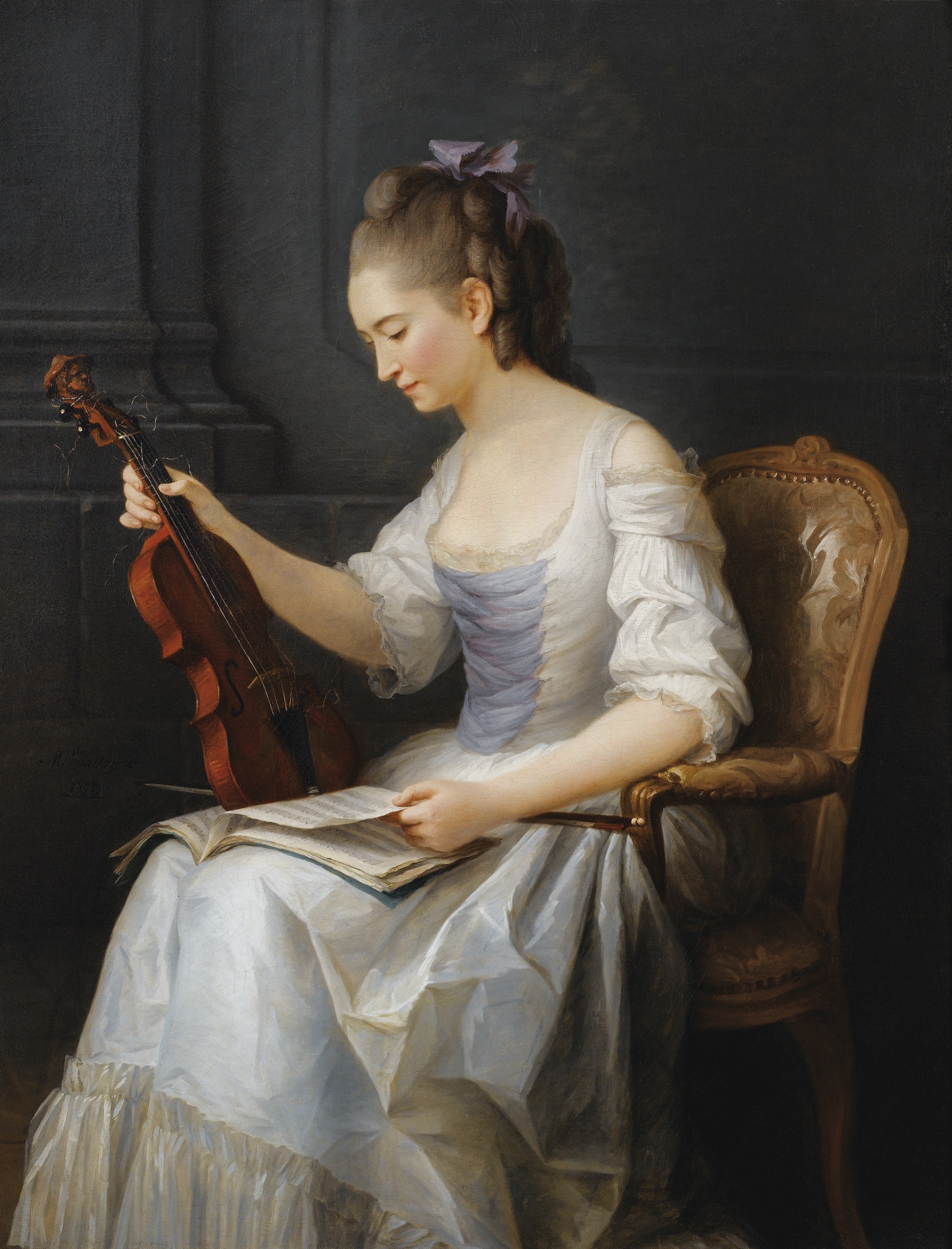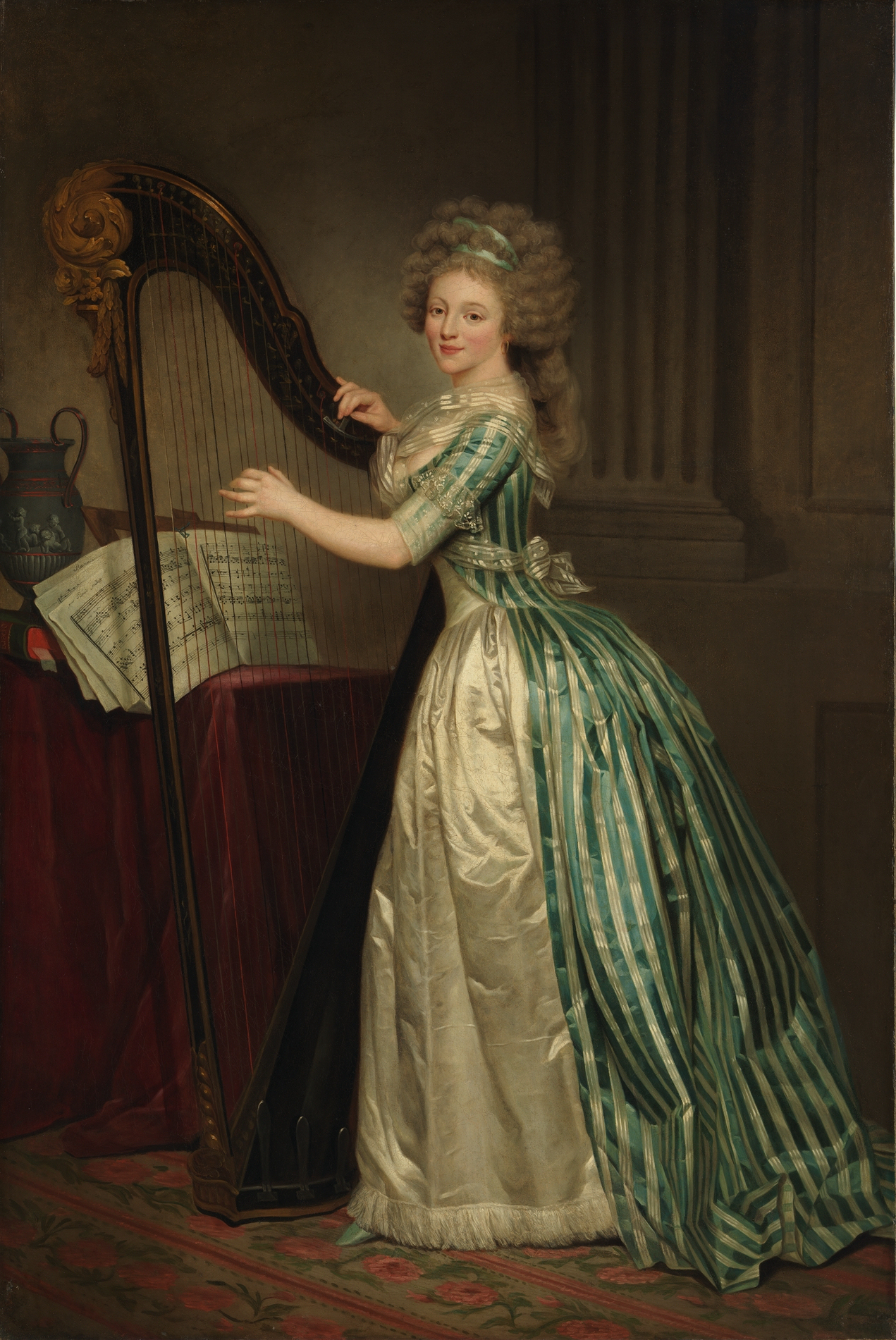 |
| Self Portrait in a Straw Hat Élisabeth Louise Vigée Le Brun Oil on Canvas, National Gallery, Central London |
"Painting is poetry that is seen rather than felt, and poetry is painting that is felt rather than seen." – Leonardo da Vinci
These timeless words by Leonardo da Vinci eloquently capture the essence of artistic expression across all media. In the world of painting, feelings become visible; in poetry, visions are made to stir the heart.
While much of art history has long celebrated the achievements of male artists, the contributions of women, particularly those from France during the eighteenth century, have too often been overlooked or underappreciated.
Yet, these women
not only felt the poetry of painting, they lived it. They transformed the
visual landscape of their time, leaving behind a legacy of masterpieces that
continue to inspire and astonish.
The eighteenth century was a time of significant transformation in France. It was the age of Enlightenment, of philosophical inquiry and political upheaval. Amid the grandeur of Versailles and the unrest leading to revolution, art flourished in all its forms. And in this vibrant milieu, several French women painters emerged, forging their way through a male-dominated art world, developing unique voices, and achieving widespread acclaim.
Despite
institutional barriers and societal prejudice, they established themselves as
consummate professionals and earned the admiration of peers and patrons alike.
Let us journey into this fascinating world and rediscover some of the most prolific and pioneering women artists of eighteenth-century France. We begin with the most iconic name among them—Élisabeth Louise Vigée Le Brun.
 |
| Portrait of Mohammed Dervish Khan Oil on Canvas, Private Collection Élisabeth Louise Vigée Le Brun |
Élisabeth Louise Vigée Le Brun (1755–1842): Portraitist of Power and
Elegance
Born in Paris in 1755, Élisabeth Louise Vigée Le Brun was a child prodigy who began drawing as soon as she could hold a pencil. Her father, Louis Vigée, a pastel portraitist himself, recognized her immense talent early on and encouraged her to pursue art.
After his untimely death when she was just twelve, Élisabeth continued her artistic development under various mentors and eventually became a professional painter in her teenage years.
Her early commissions included portraits and flower studies, which showcased her remarkable sensitivity to detail, color, and texture. By her twenties, Élisabeth had established herself as one of the most sought-after portraitists in Paris.
Her gift for capturing not only the likeness but the spirit and personality of her sitters brought her to the attention of the French aristocracy. In 1776, she married Jean-Baptiste-Pierre Le Brun, an art dealer and painter, which further expanded her access to the elite circles of the art world.
Her most famous patron was none other than Queen Marie Antoinette. Between
1778 and 1789, Vigée Le Brun painted more than 30 portraits of the queen in
various poses and costumes—from the majestic and regal to the intimate and
pastoral. These works were part of an effort to soften the queen's public image
and portray her as a mother, a woman of taste, and a patron of the arts.
 |
| Self-Portrait with Two Pupils Adélaïde Labille-Guiard Oil on canvas Metropolitan Museum of Art, New York |
One of Vigée Le Brun’s most iconic paintings is Self-Portrait with Straw Hat (1782), a luminous and confident image that draws on the influence of Peter Paul Rubens, whose work she had studied during a journey to the Netherlands.
The portrait, with its brilliant lighting, fresh palette, and
casual naturalism, challenged conventional norms of female portraiture. It
asserted the artist’s dignity, skill, and intellectual presence at a time when
women were still denied formal academic training and equal recognition.
Over the course of her career, Vigée Le Brun created over 600 portraits and nearly 200 landscapes. She travelled extensively throughout Europe—living and working in Italy, Austria, Russia, and Germany—after fleeing France during the Revolution due to her close ties with the royal family.
Her international
reputation only grew, and she was welcomed by numerous royal courts, including
those in Vienna, Naples, and Saint Petersburg.
One of her most celebrated works, Portrait of Muhammad Dervish Khan,
was sold for a record-breaking $7.2 million at Sotheby’s in 2019, making it the
highest auction price ever achieved for a pre-1900 work by a woman artist.
Today, her paintings grace the halls of the world’s most prestigious museums:
The State Hermitage Museum in Russia, The National Gallery in London, and The
Metropolitan Museum of Art in New York, among others.
Adélaïde Labille-Guiard (1749–1803): Advocate for Women in Art
Adélaïde Labille-Guiard was another brilliant portraitist who carved her
niche in the artistic landscape of eighteenth-century France. Born in Paris six
years before Vigée Le Brun, Labille-Guiard also displayed a precocious talent
for painting. Like many women of her time, she faced the challenge of limited
access to formal artistic education. Undeterred, she began training with
miniaturist François-Elie Vincent and later specialized in oil painting, a
medium largely dominated by men.
Her Self-Portrait with Two Pupils (1785), now held at The Metropolitan Museum of Art, is a powerful visual statement about women artists and their right to education and professional recognition. The painting depicts Labille-Guiard at her easel, confidently working on a large canvas while flanked by two female students. It is more than a mere portrait—it is a manifesto.
At a time when women were rarely accepted into the Académie Royale
de Peinture et de Sculpture, the official body governing artistic practice in
France, Labille-Guiard’s work demanded inclusion, respect, and visibility for
female artists.
Her admission to the Académie in 1783, the same year as Vigée Le Brun, was
a significant milestone. The Academy limited the number of female members to
just four at any one time, so competition was fierce. But Labille-Guiard's
artistic excellence earned her a place and a platform from which she championed
the cause of her peers.
During and after the French Revolution, Labille-Guiard’s commitment to
representing women’s roles in society did not waver. Her portraits ranged from
dignified representations of female intellectuals and artists to statesmen and
revolutionaries. She sought not only to portray her subjects with grace and
intelligence but also to assert the capability of women to contribute
meaningfully to the cultural and political discourse of the time.
Her works were frequently exhibited at the Salon, the premier venue for artists in France. Despite the upheavals of the revolutionary period, she continued to paint, mentor young women, and advocate for gender equality in the arts until her death in 1803.
 |
| Painting of a female violinist Anne Vallayer-Coster Oil on canvas National Museum of Fine Arts, Stockholm, Sweden |
Anne Vallayer-Coster (1744–1818): Master of Still Life
In an era when still-life painting was often dismissed as a lesser genre, Anne Vallayer-Coster elevated it to extraordinary heights. Born in Paris to a family of artisans—her father was a master goldsmith and tapestry designer—Vallayer-Coster was immersed in the world of art from an early age.
Her exquisite talent for rendering natural objects with elegance and precision
soon drew critical acclaim.
Her breakthrough came in 1770, when she was accepted into the Académie
Royale, an exceptional feat for a woman and especially for a still-life
painter. Her entry pieces—sumptuous depictions of flowers, fruits, and precious
objects—demonstrated an extraordinary technical mastery and a keen sensitivity
to color and composition.
Though still life was traditionally considered a “decorative” genre,
Vallayer-Coster’s paintings were anything but mere decoration. Her works
radiated a sense of abundance, serenity, and contemplation, often inviting
viewers to reflect on the transience of life and beauty. With luminous textures
and almost tactile realism, her paintings rivalled the best works of her male
contemporaries.
Her patrons included Marie Antoinette and other members of the French
court. But with the fall of the monarchy and the chaos of the Revolution,
Vallayer-Coster’s career suffered setbacks. Like many artists of her time, she
had to adapt to shifting tastes and political realities. Nevertheless, she
continued to work quietly, producing works of remarkable beauty and restraint
until she died in 1818.
 |
| Self-portrait with a Harp Oil on Canvas Rose-Adélaïde Ducreux Metropolitan Museum of Art of New York City |
Rose-Adélaïde Ducreux (1761–1802): Harmony of Art and Music
Born in the turbulent years leading up to the French Revolution, Rose-Adélaïde Ducreux was a multi-talented artist who brought a unique perspective to eighteenth-century French painting. The daughter of Joseph Ducreux, a successful portraitist and court painter, Rose was trained in both visual and musical arts.
She seamlessly blended her passions, often portraying herself with musical instruments, suggesting the harmony between these two forms of expression. Her most famous work, Self-Portrait with a Harp (c. 1790), reveals a serene, introspective young woman seated beside a large harp.
The painting, executed in oil on canvas, is delicate in colour and rich in emotional depth. Displayed at the Salon of 1791, it captured public attention for its grace and technical finesse. Today, it is housed at the Metropolitan Museum of Art in New York.
Ducreux’s work often featured subtle, pastel hues and carefully arranged
compositions that conveyed both intellectual poise and feminine sensitivity.
Her choice to portray herself as actively engaged in music or art was a bold
statement of self-determination and independence. At a time when women were
frequently portrayed as passive muses, Ducreux painted herself as a creator of
music, of art, of meaning.
Her life, like many during her era, was brief—cut short in 1802 at the age
of 41. But her legacy lives on, a testament to the refined sensibility and
enduring power of women’s artistic vision.
A Sisterhood of Strength and Talent
The stories of Vigée Le Brun, Labille-Guiard, Vallayer-Coster, and Ducreux
illuminate a golden chapter in art history—one in which French women painters
overcame prejudice, challenged norms, and enriched the world with their vision
and artistry. They refused to be confined to the domestic sphere, instead
claiming space on the grand canvas of cultural history.
Their works continue to speak across the centuries, reminding us that talent knows no gender, and that art, in its truest form, is both seen and felt.